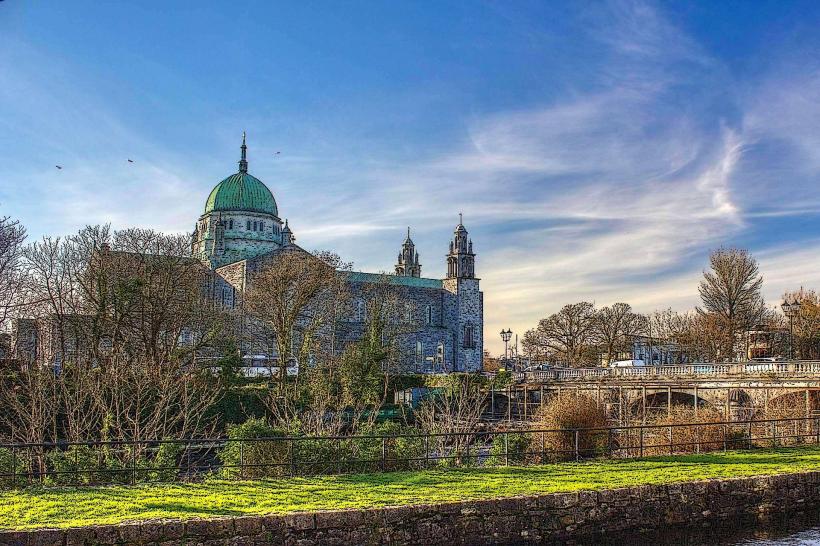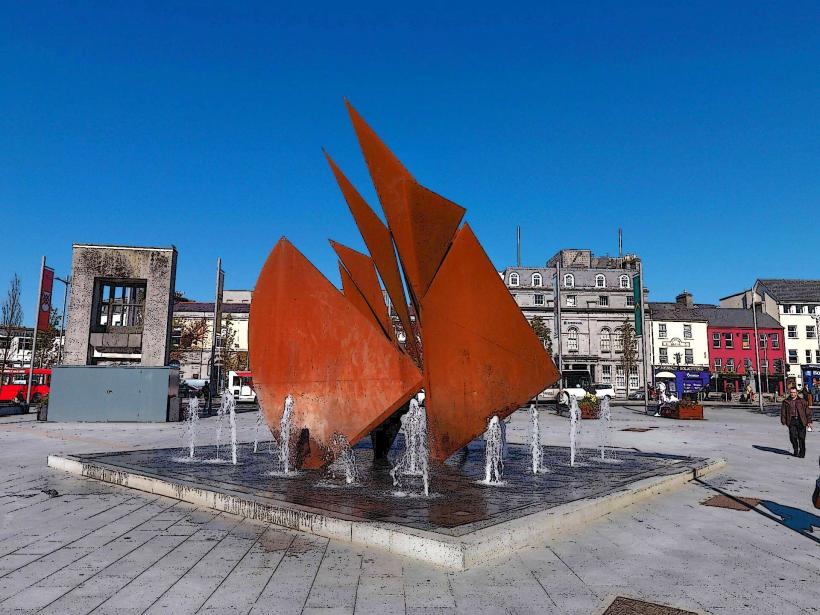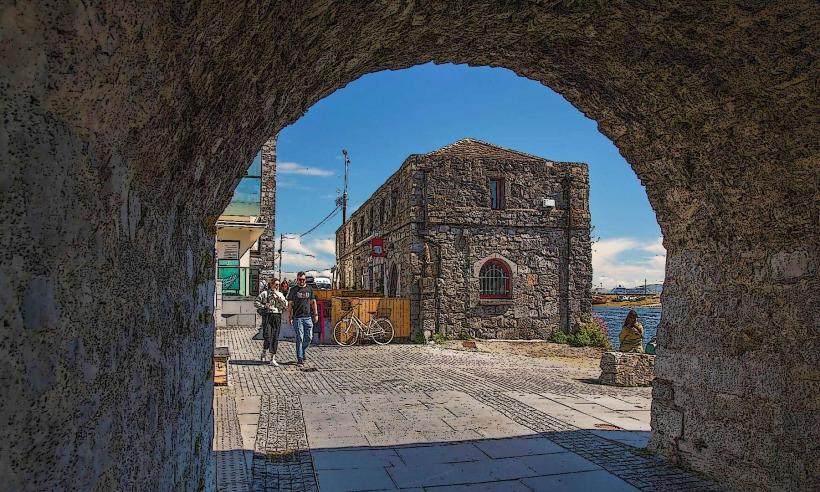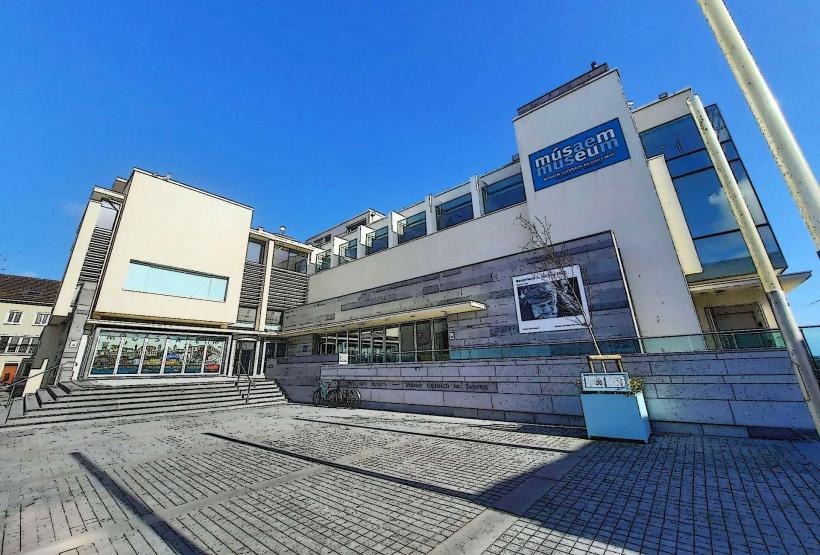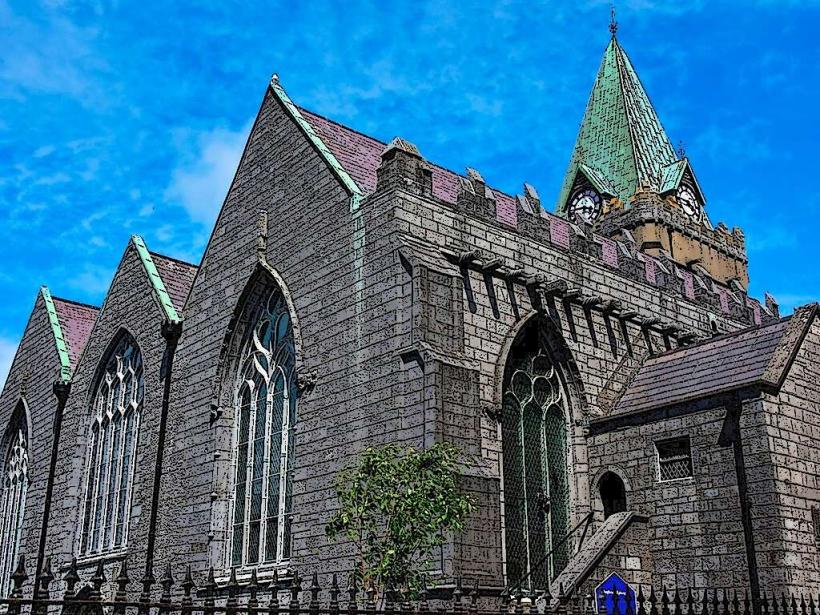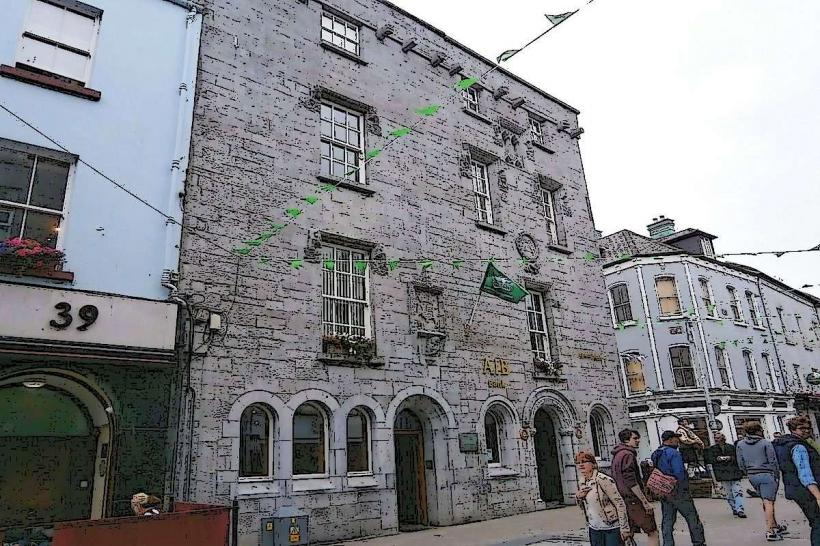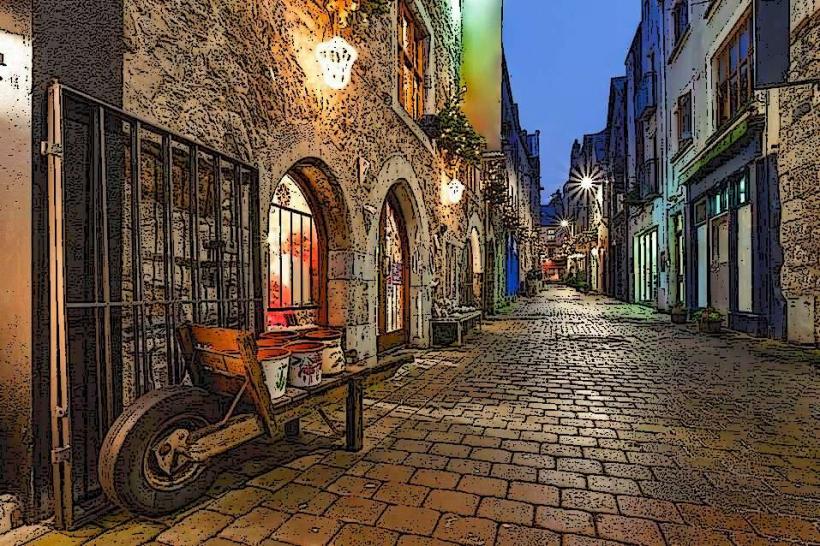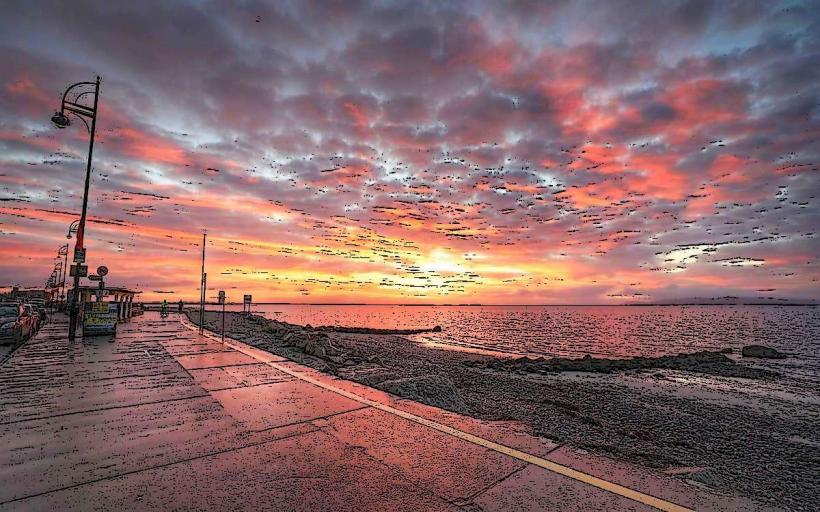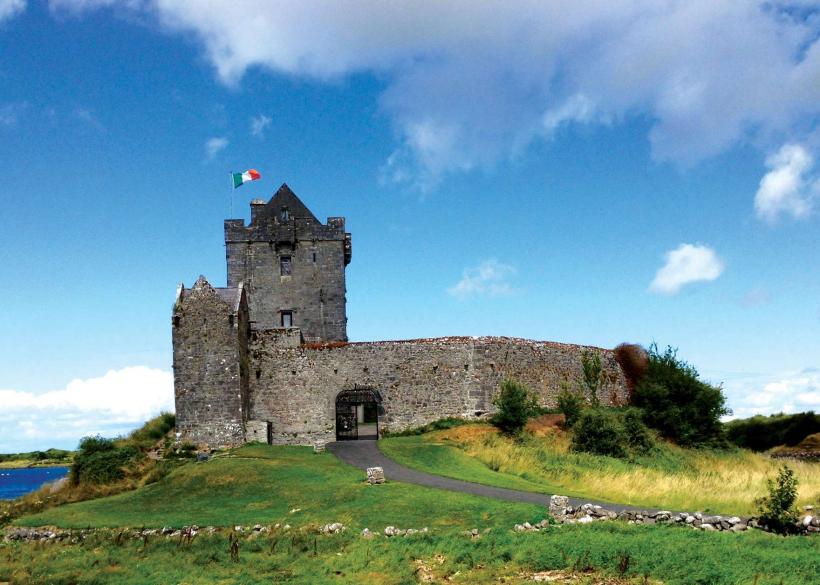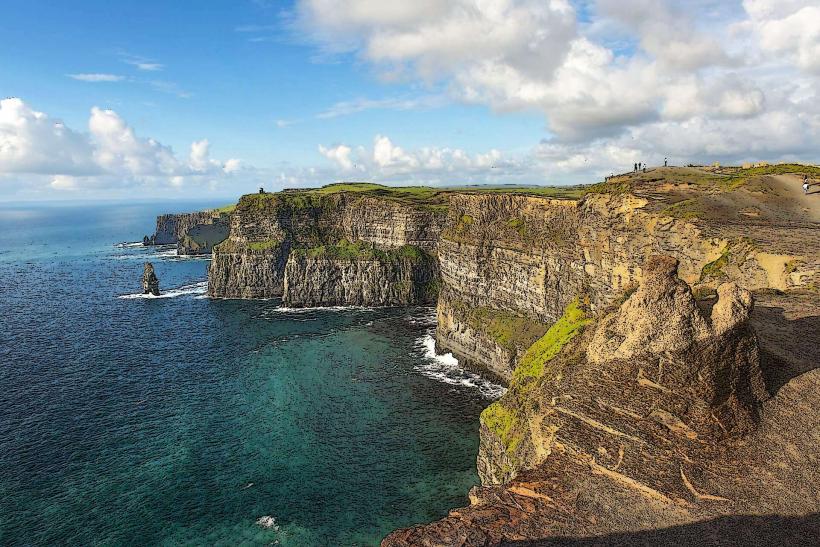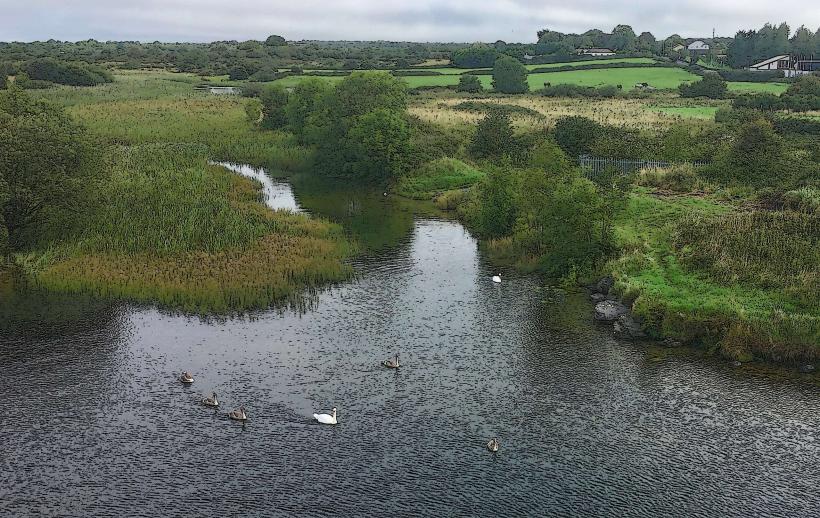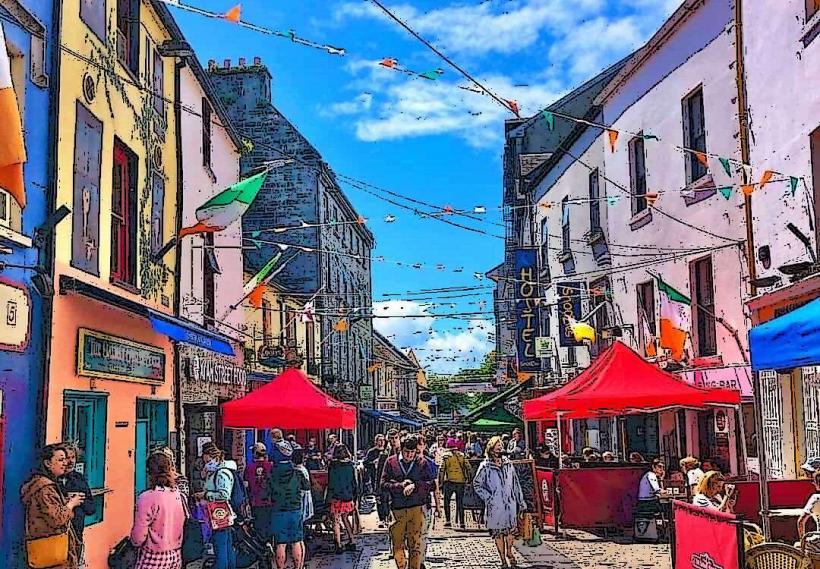Information
City: GalwayCountry: Ireland
Continent: Europe
Galway is a vibrant city located on the west coast of Ireland, known for its rich cultural heritage, scenic beauty, and lively atmosphere. It serves as both a gateway to the Wild Atlantic Way and a hub for arts, music, and festivals. With its unique blend of historical landmarks, modern amenities, and picturesque landscapes, Galway is one of Ireland’s most charming cities.
1. History and Origins
Galway has a deep-rooted history dating back over 800 years, with its origins traced to a Gaelic settlement and later a Norman fortress built around the 12th century. The city became a significant trading hub during the medieval period, and it was granted a charter by the English crown in the late 12th century, establishing it as a city.
In the 16th and 17th centuries, Galway was part of the Spanish-controlled province of Connacht, and it grew as an important port city. The city is known for its historical association with the Galway Tribes, a group of 14 influential families who ruled Galway during medieval times.
Galway played a key role in the Irish Rebellion of 1641, and its history is marked by frequent conflict, especially during the English Civil War and the Great Irish Famine in the 19th century, which caused significant depopulation in the region. Despite these challenges, the city continued to thrive and develop.
2. Economy
Galway’s economy has diversified significantly in recent decades. Historically, it relied heavily on fishing, agriculture, and trade, but it has since evolved into a thriving center for technology, education, and tourism.
The Medtronic, Boston Scientific, and Stryker companies have large operations in Galway, making it a key hub for medical device manufacturing and healthcare industries. The city has also grown as a center for information technology and digital media, with numerous tech startups establishing themselves in the area.
Tourism is a major part of Galway’s economy, with the city drawing visitors from around the world who come to experience its festivals, scenic beauty, and rich cultural life. The surrounding region of Connemara and the Aran Islands also attract significant numbers of tourists.
3. Education and Research
Galway is home to two major educational institutions: NUI Galway (National University of Ireland Galway) and Galway-Mayo Institute of Technology (GMIT). NUI Galway, founded in 1845, is one of Ireland’s leading universities, offering a wide range of programs in the arts, sciences, and engineering, with a strong emphasis on research, particularly in the fields of marine science, medicinal chemistry, and digital technologies.
The city also boasts a vibrant student population, contributing to its dynamic and youthful atmosphere. Galway is known for its academic excellence and its role in advancing Ireland’s research and development agenda.
4. Culture and Arts
Galway is renowned for its arts and cultural scene, earning it the title of European Capital of Culture in 2020. The city is deeply connected to traditional Irish music, dance, and theater, while also embracing contemporary artistic forms.
The city is famous for hosting several large cultural festivals, including:
- Galway International Arts Festival: A major arts festival that takes place every July, featuring theater, music, dance, and visual arts.
- Galway Film Fleadh: An international film festival that showcases independent films and attracts filmmakers from around the world.
- The Galway Races: A world-famous horse racing event held each summer.
- Cúirt International Festival of Literature: One of the country’s most prestigious literary festivals.
Eyre Square and Shop Street are known for their colorful buskers, traditional Irish music performances, and craft shops. The Druid Theatre and Town Hall Theatre host both contemporary and traditional performances, making Galway one of the most vibrant cultural centers in Ireland.
5. Architecture
Galway's architecture is a blend of historic buildings and modern structures. The city is known for its medieval streets, with narrow lanes and colorful shopfronts, particularly around Shop Street, which is the heart of the city’s commercial and social life.
Key landmarks in Galway include:
- Galway Cathedral: Built in the 1960s on the site of a former prison, this stunning cathedral combines Romanesque and Gothic architectural styles and is known for its impressive dome and stained-glass windows.
- Spanish Arch: A historical landmark dating back to the 16th century, originally part of the city’s medieval defenses. It is located near the River Corrib and is a popular gathering place for locals and visitors alike.
- Lynch's Castle: A 16th-century medieval building that was once the residence of one of the Galway Tribes. Today, it is a bank but retains its historical significance and architectural charm.
Additionally, Claddagh, an ancient fishing village on the banks of the River Corrib, is known for its traditional cottages and quaint charm.
6. Politics and Governance
Galway is a significant political and administrative center in the west of Ireland. The city is governed by a city council that is responsible for local services, planning, and development.
Galway is represented in the Dáil Éireann (lower house of the Irish Parliament) and the Seanad Éireann (upper house) through its elected Members of Parliament. The city has a long history of political engagement, particularly in terms of promoting regional development and advocating for the Western Region of Ireland.
7. Tourism
Tourism is one of Galway's biggest industries, attracting visitors to the city for its blend of historical sites, lively festivals, and scenic landscapes.
Key attractions include:
- Eyre Square: The city’s main square, a central gathering spot for locals and visitors. It is home to the John F. Kennedy Memorial Park and the Golden Heart Sculpture.
- The Galway City Museum: A museum that highlights the city's history and culture, including its medieval roots, maritime history, and local art.
- The Claddagh: This picturesque area, with its charming cottages, was once a fishing village and is famous for the Claddagh ring, a traditional Irish symbol of love, loyalty, and friendship.
- Galway Bay: A stunning natural harbor that provides opportunities for sailing, kayaking, and walking along the scenic coastline. Visitors can take boat trips to the Aran Islands or explore Silver Strand Beach.
Connemara, a vast and rugged region near Galway, is a popular destination for hiking, wildlife watching, and exploring natural beauty, including Kylemore Abbey and the Twelve Bens mountains.
8. Parks and Green Spaces
Despite being a bustling city, Galway has several beautiful parks and green spaces for residents and tourists to enjoy:
- Eyre Square: A large public space in the city center, offering green lawns, statues, and fountains. It serves as a focal point for events and gatherings.
- The Spanish Arch and Corrib River Walk: This scenic walk along the river provides views of Galway’s medieval architecture and connects the city with the surrounding countryside.
- Galway’s Arboretum: A botanical garden with a wide variety of plants, trees, and flowers.
- Salthill Promenade: A popular walking route along the coast, offering stunning views of Galway Bay and the Aran Islands.
9. Food and Drink
Galway is a food lover's paradise, known for its seafood, locally produced food, and thriving restaurant scene. The city's English Market is one of the oldest markets in Ireland, offering fresh produce, meats, cheeses, and fish.
Galway has a number of award-winning restaurants that specialize in seafood, particularly mussels, oysters, and salmon from the surrounding Atlantic waters. The Galway Food Festival, held annually, is an excellent opportunity to sample local delicacies.
The city is also known for its lively pub scene, with numerous traditional Irish pubs serving pints of Guinness and offering live traditional music sessions.
10. Transportation
Galway is well connected to other parts of Ireland, with good road, rail, and air links. The city’s Bus Éireann and CityLink offer services to Dublin, Limerick, and other cities in Ireland. The Galway Train Station provides a rail connection to Dublin and other major destinations.
Galway Airport provides domestic and limited international flights, while Shannon Airport, located about 90 minutes away, offers more extensive international connections.
The city itself is very pedestrian-friendly, and cycling is a popular mode of transport. Galway is working on improving its public transport infrastructure, with a focus on expanding bus services and bike lanes.
Conclusion
Galway is a city that blends old-world charm with a youthful and vibrant atmosphere. Its rich history, cultural heritage, and thriving arts scene make it one of Ireland’s most beloved cities. Whether you're exploring its medieval streets, enjoying its festivals, or savoring its local cuisine, Galway offers an unforgettable experience that reflects the heart and soul of Ireland.

